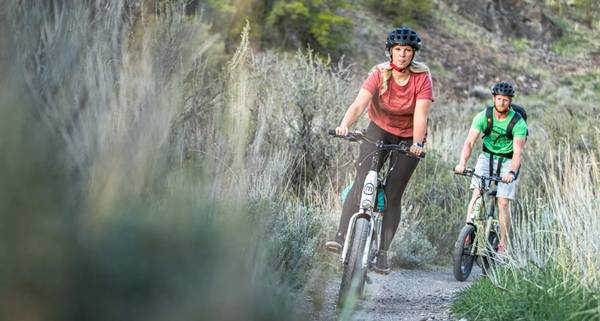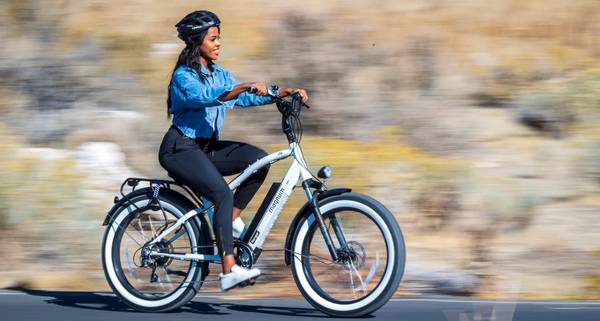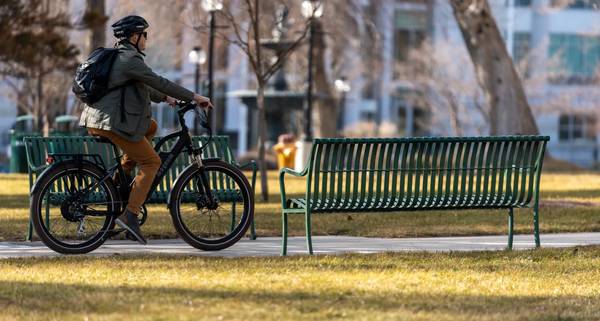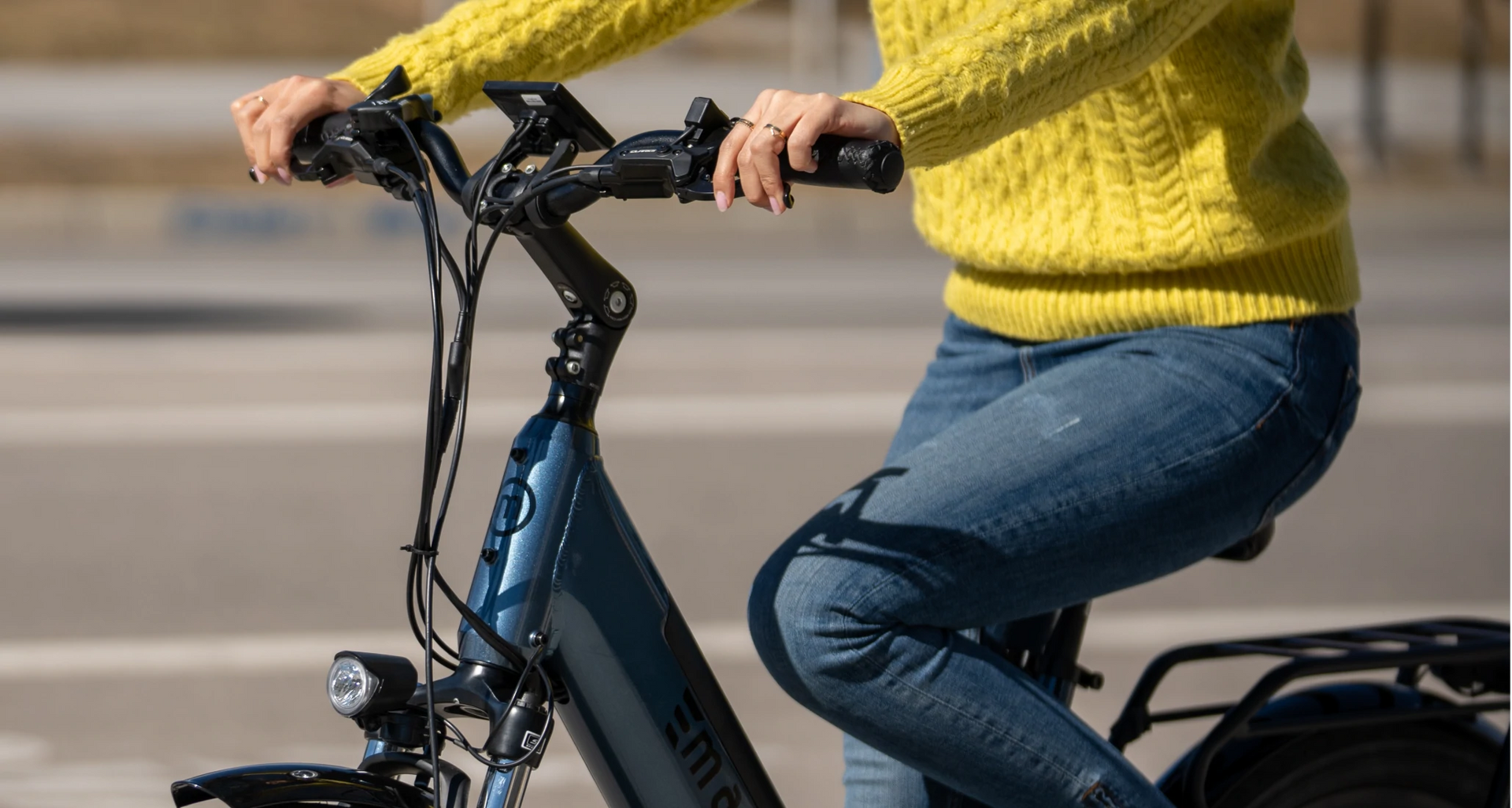PAS vs. Throttle: Choosing Your E-Bike’s Power Mode
E-bikes have revolutionized transportation. As an eco-friendly alternative to cars and a power-driven alternative to the traditional bicycle, they’re both efficient and just plain fun to ride.
But while all e-bikes come with a pedal-assist system (PAS), some also come with a throttle, which provides power without any pedaling.
Should your e-bike have both? And if you do have both, how do you decide which one to use at any given time?
In this post, we'll delve into the benefits of each, helping you make an informed choice that suits your riding style and needs.
Jump ahead if you want:
Understanding Pedal Assist And Throttle Systems

Feel the power as you conquer hills with ease using your PAS. Pictured: Magnum Pathfinder 500
Before we dive into the pros and cons, let's clarify what each of these power modes are.
A pedal assist system (PAS) amplifies your power by seamlessly activating the motor as you go. It offers varying levels of assistance, making it feel like a natural extension of your own effort.
On the other hand, the throttle provides power without any pedaling needed — just a simple twist on the handlebar or push on a trigger.
If you’re familiar with the e-bike class system:
Class 1 e-bikes don’t have throttles
Class 2 e-bikes do have throttles
Class 3 e-bikes may have optional throttles
Class 1 e-bikes (those without throttles) are the most commonly allowed class among varying regulations put in place by cities, regions, and states.
Class 2 e-bikes face heavier restrictions, so check the regulations in parks and on trails and paths where you hope to ride to see if throttle use is permitted.
Class 3 (the fastest e-bikes) are often the most restricted because they have the highest top assisted speed (up to 28mph, compared to 20mph for Class 1 and 2). Class 3 e-bikes are sometimes prohibited on bike paths, multi-use trails, and even bike lanes, which may mean you can only ride in the street with traffic — again, depending on your local laws.
By the way — all Magnum e-bikes can be customized to any class you like!
Factors Influencing Your Choice
How do you decide when to use your PAS vs. throttle?
1. Riding Experience and Intensity
Do you enjoy the rhythm of pedaling? If so, the pedal assist system might be your ideal match.
PAS closely mimics the feel of a regular bike, giving you a natural riding experience with a boost. This mode is great for those who want to get a workout while commuting or leisurely riding.
On the flip side, the throttle system offers a different thrill. Get an instant burst of speed without any effort! Great for hills, but very fun on flat roads, too.
If you aren’t riding for a workout or want to easily navigate traffic without the constant need to pedal, the throttle could be your go-to choice.
2. Range and Battery Efficiency

Throttles offer high speeds with minimal effort. Just remember, your throttle uses more power, decreasing your range compared to the PAS. Pictured: Magnum Ranger 2.0
Battery efficiency maximizes your range, so it’s a key consideration — especially if you ride across long distances or on challenging inclines.
In short, PAS is the winner in this category. Your own pedaling power eases reliance on the motor, meaning your battery lasts longer.
Conversely, the throttle tends to consume more battery power. Relying solely on the throttle could result in a shorter battery life.
3. Precision and Control
Pedal assist systems offer several levels of assistance, creating a customized riding experience.
Depending on your e-bike, your PAS will respond to cadence (how quickly you pedal) or torque (how hard you pedal). Learn more about cadence and torque in our post, How E-Bike Pedal-Assist Systems Work: Cadence And Torque Sensors.
This precision is especially useful when you want to maintain consistent speed or gradually increase your effort.
On the other hand, the throttle system offers quick bursts of power at your fingertips. The throttle is great for when you need to speed up quickly (say, when a red light turns green in traffic), tackle a sudden incline, or navigate through tight spots.
But while PAS is basically “set it and forget it,” you can’t pre-set your throttle — you need to actively engage the throttle for the duration of its use.
Making Your Decision

Pedaling hard, or hardly pedaling? When you have both PAS and throttle on your e-bike, the choice is yours! Pictured: Magnum Metro 750
The ultimate decision between pedal assist and throttle depends on your personal preferences and riding needs!
The best way to choose is to try both systems.
Find a Magnum Dealer near you to take a test ride and see which one aligns better with your style.
Conclusion
In the battle of pedal assist system vs. throttle, there's no definitive winner — you decide.
Pedal assist offers a traditional experience while enhancing your pedaling, making it perfect for longer rides. Throttle mode, on the other hand, offers immediate power for quick accelerations and unique riding scenarios.
To choose, take stock of your riding habits, the terrain you typically ride on, and your preference for precision.
Ultimately, your e-bike is an extension of your own style. So by carefully considering these factors, you'll make the right choice to ensure more enjoyable rides!

